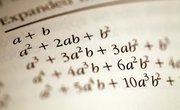The basic definition of multivariate analysis is a statistical method that measures relationships between two or more response variables. Multivariate techniques attempt to model reality where each situation, product or decision involves more than a single factor. For example, the decision to purchase a car may take into consideration price, safety features, color and functionality. Modern society has collected masses of data in every field, but the ability to use that data to obtain a clear picture of what is going on and make intelligent decisions is still a challenge.
Identify Purpose of Research
Multivariate techniques are used to study data sets in consumer and market research, quality control and quality assurance, process optimization and process control, and research and development. These techniques are particularly important in social science research because social researchers are generally unable to use randomized laboratory experiments, like those used in medicine and natural sciences. Here multivariate techniques can statistically estimate relationships between different variables, and correlate how important each one is to the final outcome and where dependencies exist between them.
Determine Appropriate Statistical Method
Because most data analysis tries to answer complex questions involving more than two variables, these questions are best addressed by multivariate techniques. There are several different multivariate techniques to choose from, based on assumptions about the nature of the data and the type of association under analysis. Each technique tests the theoretical models of a research question about associations against the observed data. The theoretical models are based on facts plus new hypotheses about plausible associations between variables.
Advantages of Multivariate Analysis
Multivariate techniques allow researchers to look at relationships between variables in an overarching way and to quantify the relationship between variables. They can control association between variables by using cross tabulation, partial correlation and multiple regressions, and introduce other variables to determine the links between the independent and dependent variables or to specify the conditions under which the association takes place. Advantages of multivariate analysis include an ability to glean a more realistic picture than looking at a single variable. Further, multivariate techniques provide a powerful test of significance compared to univariate techniques.
Limitations of Multivariate Analysis
Multivariate techniques are complex and involve high level mathematics that require a statistical program to analyze the data. These statistical programs can be expensive for an individual to obtain. One of the biggest limitations of multivariate analysis is that statistical modeling outputs are not always easy for students to interpret. For multivariate techniques to give meaningful results, they need a large sample of data; otherwise, the results are meaningless due to high standard errors. Standard errors determine how confident you can be in the results, and you can be more confident in the results from a large sample than a small one. Running statistical programs is fairly straightforward but does require statistical training to make sense of the data.











